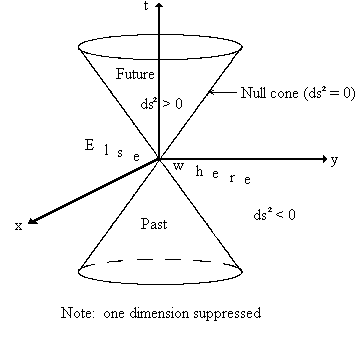| 1905 can only be described as having been a fabulous year for the young Albert Einstein. While working at the Bern patent office he published three ground breaking research papers. The scope of these papers, concerning the photoelectric effect, Brownian motion and the formulation of special relativity, respectively, was enormous. |
With the formulation of the Special Theory of Relativity, Einstein started a scientific revolution that was to change our conception of both space and time. One of the cornerstones of Einstein's theory is the assumption that nothing can travel faster than the speed of light c (roughly 300 million meters/second). Once one takes into account the finite velocity with which signals such as light travel the Newtonian concept of simultaneity is destroyed. This leads naturally to a new concept, first proposed by Herman Minkowski, in which the three dimensions of space and one dimension of time are combined into a new single entity: a four dimensional continuum called space-time.
|
The concept of simultaneity is destroyed in Special Relativity. Because information cannot travel faster than the speed of light, it is more natural to discuss two events as being related through their location in the four-dimensional space-time. |
 |
The simple ideas underlying Special Relativity immediately lead to predictions of new physics:

As far as mathematics is concerned, the simplest way to express these results is to model the four dimensional space-time as possessing a flat metric which encodes the invariant interval which exists between events:
The fact that the metric is flat means that the stationary curves (geodesics) are straight lines. Free particles and light rays travel along certain classes of these straight lines .